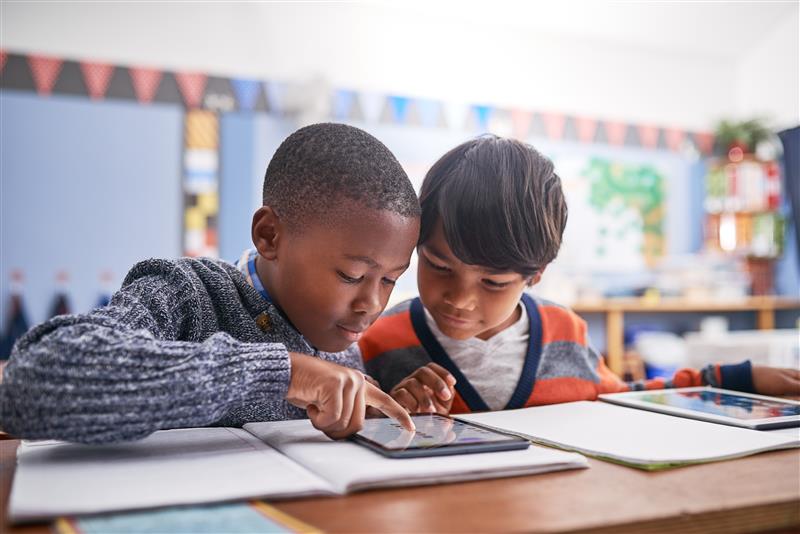Gamification and storytelling in English classrooms: empowering young learners as digital narrators

Gamification and storytelling in English classrooms: empowering young learners as digital narrators
At this year’s Future of English Language Teaching (FoELT) conference, Joseph Yaw Dawson explored how gamification and digital storytelling can help young learners become active creators of language, rather than passive consumers. His session showed how combining play, narrative and technology can inspire creativity, collaboration and confidence among learners aged 6 to 12.
Joseph Yaw Dawson is a certified teacher trainer and foreign language teacher at the Specialized Educational and Scientific Center of Ural Federal University in Yekaterinburg, Russia. He holds a Master of Arts, a Bachelor of Education and a Teacher’s Certificate from the University of Cape Coast, Ghana, as well as TESOL, CELT-P, TKT and Train the Trainer qualifications. He is currently completing a PhD in Sociological Sciences, and his research interests include cross-cultural training, talent management and methods of teaching foreign languages.
Active creators, not passive learners
Joseph began by challenging traditional perceptions of young learners as passive receivers of knowledge. In today’s digital world, he argued, children already engage deeply with interactive media and creative technologies. The classroom should harness this familiarity to help them produce language meaningfully.
Gamification and storytelling, when used together, can transform learning into an active process. Learners take on roles, complete missions, and construct narratives that connect to their interests and experiences. This approach builds motivation and helps students see English as a tool for expression and problem-solving, not just a subject to study.
A gamified classroom model
Joseph described a classroom model based on active learning and communicative language teaching principles. In this model, lessons are structured around quests and challenges that integrate both play and language practice.
For example, students can progress through quests by earning “vocabulary power-ups,” collecting story elements or unlocking new challenges as they achieve learning goals. Digital platforms such as Book Creator, StoryJumper and Classcraft provide engaging ways for learners to co-create stories using images, sound and text.
This model supports differentiation by allowing learners to progress at their own pace and choose roles or story directions that suit their abilities and interests.
The power of storytelling
Digital storytelling encourages learners to use English for authentic communication. By crafting their own stories, learners practise key language skills while developing creativity and critical thinking.
Joseph shared examples of projects where learners wrote and illustrated digital stories, recorded audio dialogues, or created short video narratives. These activities encouraged collaboration, as learners worked in pairs or small groups to plan, draft, and edit their stories.
Through this process, learners developed not only their language skills but also digital literacy and intercultural awareness, connecting their stories to global themes and personal experiences.
Assessment and feedback
Joseph highlighted the need to rethink assessment when using gamified and storytelling-based approaches. Instead of focusing solely on accuracy or test results, teachers should value creativity, effort and the learning process.
He suggested using flexible rubrics that measure engagement, communication, teamwork and problem-solving, alongside linguistic performance. Feedback should be formative and reflective, helping learners recognise their progress and set new goals.
Challenges and practical solutions
Implementing gamified storytelling can present challenges such as time management, classroom logistics and technology access. Joseph advised teachers to start small, integrating short storytelling tasks or mini-quests before developing full projects.
He also emphasised that gamification should serve pedagogy, not replace it. The aim is to enhance motivation and participation while maintaining clear learning outcomes. Even simple, low-tech adaptations can make lessons more interactive and rewarding.
Key takeaways
|
Theme |
Key idea |
|
Learner Agency |
Young learners thrive when they are active creators of language. |
|
Gamification |
Quests and rewards increase motivation and engagement. |
|
Digital Storytelling |
Story-based projects develop language, creativity and collaboration. |
|
Inclusive design |
Differentiated tasks ensure accessibility for all learners. |
|
Assessment |
Feedback should value creativity, process and authentic communication. |
Final thought
Joseph’s session demonstrated that gamification and storytelling are not extras but essential tools for modern language teaching. By empowering young learners to become digital narrators, teachers can create classrooms that are dynamic, inclusive and full of meaningful language use—helping children connect English learning with imagination, identity and the wider world.
